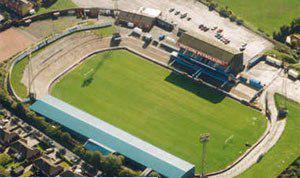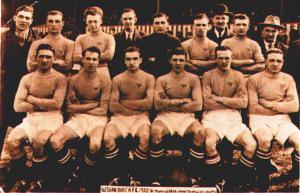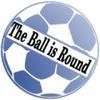The end of season form of Roberto Martinez’s Wigan Athletic ensured their Premier League survival was assured long before the final kicks of the season took place in May. If he can build on that squad then the prospects of a brighter season next year are high. It is easy to mock the vanity of owner Dave Whelan, especially with the decision last year to rename the stadium after himself, but if it wasn’t for him Athletic may have gone the same way as AFC, Central, County, United, Town and finally Borough.
Football has struggled to break the ice in Wigan since Wigan County were formed back in 1897, playing in the Lancashire Leagues at a recreation ground known locally as Springfield Gardens (later renames as Springfield Park). They applied for election to the league in 1898 but failed. County soon fell by the wayslide and the baton was taken up by Wigan Town. Ditto same story and then United were born.
The fourth attempt at making football work in a rugby league dominated town came in 1919 when Wigan United were found guilty of paying their players which even at this stage was deemed “not in the interest of the modern game”. A new formed was created out of the ashes and called Wigan Association although they soon changed their name to Wigan Borough.

Wigan Borough decided to throw their hat into the ring and despite finishing in 17th place (out of 18 teams) the Football League accepted their application. They lined up for their first game, away to Nelson and came back with all 2 points with a 2-1 victory. Alas there wasn’t a lot of high points in the season. They eventually finished the league 4th from bottom, avoiding re-election by just two points.
Over the next few seasons the club struggled, although they did record a fifth place finish (in 1922/23) and then their best ever finish in 1928/29 when they finished fourth. Whilst crowds could reach 10,000+ at Springfield Park, they were the town’s poor relations to the Rugby side who played at Central Park, and without any on the field success.

Just a year later a final attempt was made to keep football in the town when Wigan Athletic were formed and after a deal with the liquidators of Borough, they moved into Springfield Park. The rest as they say is history.
If you want to read a much more detailed history of Wigan Borough then head over to Bernard Ramsdale’s excellent website here.
Next in the Series – Nelson FC

